Science News
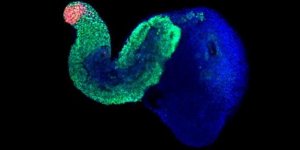
A team of scientists at the University of Cambridge has developed an artificial mouse embryo-like structure capable of forming the three major axes of the body. »

Scientists have uncovered the genetic basis for the production of domoic acid, a potent neurotoxin produced by certain harmful algae blooms. »

Human species have for the first time captured the surface of an asteroid on video footage by Hayabusa 2 mission to Ryugu. »

Data from NASA's Cassini spacecraft has revealed what appear to be giant dust storms in equatorial regions of Saturn's moon Titan. The discovery makes Titan the third Solar System body, in addition to Earth and Mars, where dust storms have been observed. »

Researchers have developed a genome-editing tool for the potential treatment of mitochondrial diseases: serious and often fatal conditions which affect 1 in 5,000 people. »

Mammals are unique in many ways. We're warm-blooded and agile in comparison with our reptilian relatives. But a new study suggests we're unique in one more way -- the makeup of our spines. »

Researchers discovered the means by which honeybees keep their temporary clumps intact during adverse weather conditions, confirming their theory about bees’ behavior under stressful conditions. »
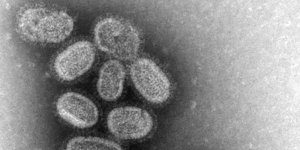
Researchers at the University of Cambridge and the University of Oxford have discovered a new molecule that plays a key role in the immune response that is triggered by influenza infections. »

In a large clinical trial to determine the risks and benefits of daily low-dose aspirin in healthy older adults without previous cardiovascular events, aspirin did not prolong healthy, independent living (life free of dementia or persistent physical disability). »
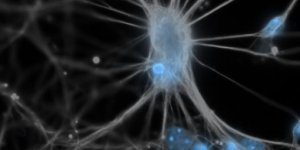
Neurons absorb and release water when they relay messages throughout the brain, according to a study by researchers at the National Institutes of Health and other institutions. »

Researchers investigating the effects of air pollution conducted tests on more than 25,000 people in 162 Chinese counties and found that pollution is linked to a significant decline in cognition, and that the impact increases with age. »
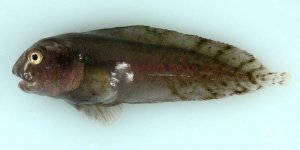
Three new species of fish, aptly named Pink, Purple and Blue for their coloring, have been found at the bottom of one of the deepest parts of the Pacific Ocean. »
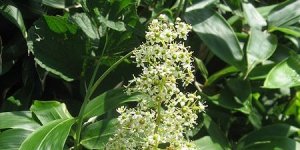
German scientists discovered that a herbal ingredient from traditional Chinese medicine showed promising results in weight loss. »
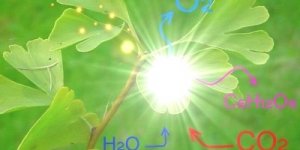
The quest to find new ways to harness solar power has taken a step forward after researchers successfully split water into hydrogen and oxygen by altering the photosynthetic machinery in plants. »

A new type of human brain cell was discovered by Scientists that has never been seen in mice and other well-studied laboratory animals before. »

By using a genetic tool called DNA barcoding, Brazilian researchers could help prevent illegal fishing of threatened shark species and hence help prevent the collapse of some fisheries. »

Despite rapidly ageing, dominant animals live longer because their underlings are driven out of the group – becoming easy targets for predators. »

Agricultural Research Service (ARS) scientists have transferred a biochemical pathway found in sorghum, which produces a weed-killing compound, into rice plants. »

Researchers have successfully demonstrated how an electronic device implanted directly into the brain can detect, stop and even prevent epileptic seizures. »

A team of scientists has announced remains of a human girl from about 50 thousand years ago had one Neanderthal parent and one Denisovan parent, two different species of humans, both species now extinct. »

Researchers report that vaping of e-cigarette usage may modify the genetic material, or DNA, in the oral cells of users, which could increase their cancer risk. »

Researchers have identified connections between neurons in brain systems associated with reward, stress, and emotion. Conducted in mice, the new study may help untangle multiple psychiatric conditions, including alcohol use disorder, anxiety disorders, insomnia, and depression in humans. »

Researchers created a new type of battery—made of paper and fueled by bacteria. »

The use of mud or wet clay as a topical skin treatment, or poultice, is a common practice in many cultures. In fact, the concept of using mud as medicine goes back to the earliest times. »

New DNA analysis reveals that, before their mysterious disappearance, the Norse colonies of Greenland had a “near monopoly” on Europe’s walrus ivory supply. An overreliance on this trade may have contributed to Norse Greenland’s collapse when the medieval market declined. »

New research shows that five grams a day sodium consumption does not increase health risks, however dramatic reductions in salt consumption may even prove harmful. »

Watermelon rind, usually discarded as waste, has been shown by researchers in Pakistan to be capable of cheaply and efficiently removing arsenic from groundwater. »

Using magnetoencephalography, researchers showed that while the human brain is still able to perceive sounds during sleep, it is unable to group these sounds according to their organization in a sequence. »

A technology developed by ARS scientists is being used to boost resistance to a disease in potatoes that can destroy entire fields and often requires growers to repeatedly spray fungicides. The technology also may be used to breed improved varieties of many other important crops. »

Australian scientists have test driven two cars powered by a carbon-free fuel derived from ammonia. A team from the Australian government’s research agency, the CSIRO, says the pioneering technology will allow highly flammable hydrogen to be safely transported in the form of ammonia and used as a widely available fuel. »

The prospect of a vaccine to stop gaining weight by eating fat is getting closer to reality after scientists found compelling evidence linking obesity to an infectious virus. »

A team of scientists, including a volcanologist and mathematician from the University of Cambridge, discovered the phenomenon through detailed observations of gas emissions from Kīlauea volcano in Hawaii. »

Investigators successfully reversed hair loss, hair whitening and skin inflammation linked using an experimental compound. »

A correlation between obesity and genetics has been found to be modified by diet. A research group led by a U.S. Department of Agriculture scientist found that a specific gene—APOA2—can result in a higher body mass index. »

The severity of drought conditions during the demise of the Maya civilisation about one thousand years ago has been quantified, representing another piece of evidence that could be used to solve the longstanding mystery of what caused the downfall of one of the ancient world’s great civilisations. »

New research reveals that human eyes can be indicator of personality type, simply by the way they move. »

Researchers have identified a group of materials that could be used to make even higher power batteries. »

Researchers developed magnetic elastomeric composites that move in different ways when exposed to light. »

A new paper published this week suggests that liquid water may be sitting under a layer of ice at Mars' south pole. »

A team of researchers from China, Canada, the United States, and Australia published on Wednesday their discovery of an early fossilized baby snake, reportedly the oldest ever found, in a piece of amber in the middle of a sandstone deposit in Myanmar. »

The creation of artificial embryos has moved a step forward after an international team of researchers used mouse stem cells to produce artificial embryo-like structures capable of ‘gastrulation’, a key step in the life of any embryo. »

A research aimed at engineering plants to make them able to create their own fertilizer in the future. »

Massive fruit trees in the Thailand evergreen forest need massive herbivores to help spread their seeds, according to a new study. »

Scientists supported by the National Institute of Allergy and Infectious Diseases (NIAID), part of the National Institutes of Health, have discovered a set of powerful, broadly neutralizing antibodies (bNAbs) in the blood of EVD survivors. »

Nitrogen is the main nutrient added to cereal crops like corn, which makes them grow faster and stronger. But too much of a good thing could sometimes have negative outcomes. Too much nitrogen can run off with rainwater or leach through to soil and contaminate groundwater. »

A tiny silicon-based device was created by researchers making them able to harness heat from waste and convert it to it into DC electrical power. »

Injecting senescent cells into young mice results in a loss of health and function but treating the mice with a combination of two existing drugs cleared the senescent cells from tissues and restored physical function. The drugs also extended both life span and health span in naturally aging mice. »

An international team of astronomers has discovered an ancient and dramatic head-on collision between the Milky Way and a smaller object, dubbed ‘the Sausage galaxy’. »

Russian scientists believe that terrestrial bacteria that were sent to space and returned to earth now pose a threat to the existence of life on Earth. »

Other than their purity, flaws in Diamonds may be holding the key to a new type of communications with high security. Diamonds were used by researchers to preserve fragile quantum information over long distances. »